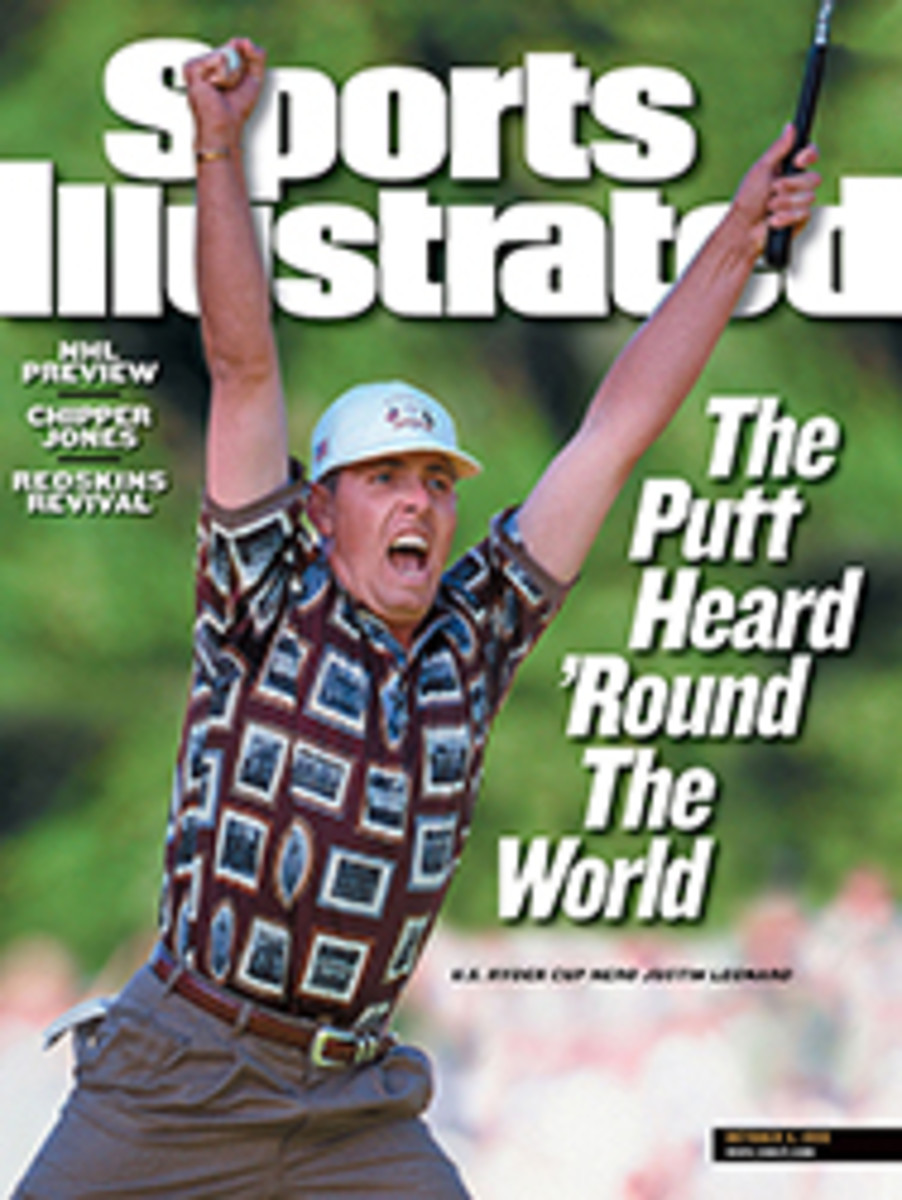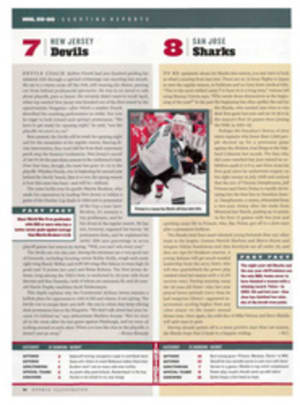
Looking Good The eye-catching thing about Anson Carter, a Bruins right wing, is that he's a very good hockey player--for a man of any color
A memorable television spot in the 1970s depicted a boy and his
grandfather chatting in a skiff. Their conversation went
something like this: "Grandpa," the boy begins, "Danny says I'm
prejudiced."
"Who is Danny?" the grandfather asks.
"He's my Jewish friend."
"Well, then, you are prejudiced," Grandpa explains, "because you
think of Danny as your Jewish friend, and not just your friend."
A quarter century later, in the gradually diversifying NHL, the
challenge for fans is to think of the Boston Bruins' Anson
Carter as a hockey player, not as a black hockey player. "That's
how I'd like it to be," says Carter. "I know that people see
what they see, and they see that I'm different. But I don't play
the game any special way because I'm a black man."
No, but he does play it exceedingly well. Entering his third
full season, Carter is one of the game's most promising stars.
He's deceptively fast, strong on the puck and tenacious in all
areas of the ice, and his rapidly developing scoring touch
resulted in 24 goals in 55 games last year, easily the best
goal-scoring pace on the Bruins. In the playoffs Carter lifted
Boston into the second round with crucial goals in the fifth and
sixth games of its series against the Carolina Hurricanes. "The
bigger the game, the better he plays," says Bruins defenseman
Ray Bourque. "He's got the whole package: speed, strength, moves
and vision. He can be scary. And because he lives right and
prepares himself, he's going to get better."
Carter has been improving since his formative years in the
Scarborough section of Toronto. The middle of the three children
of Horace and Valma Carter, who were raised in Barbados, Anson
grew up in a brick home on a sun-dappled, middle-class street.
He remembers his childhood as "a free and easy time," yet even
as he gamboled with his peers--playing marathon games of tag,
racing around on bikes-- Carter was determined. Older kids
invariably selected him to play on their side in pickup
street-hockey games. If Carter failed to score in one of those
matches, he would trudge home seething and spend the last hours
of daylight in his driveway wristing tennis balls into a net.
Carter only began playing organized ice hockey at age eight,
which made him a geezer in Scarborough, where many boys go
straight from the cradle to the face-off circle. He had made up
his mind by then that he wanted to be a doctor and, much to his
parents' amazement, had concluded that being a hockey star was
the best way for a Canadian kid to get into a top U.S. college
and pursue that dream. But as years passed, Carter became more
devoted to hockey, advancing through local leagues and
establishing himself as one of the best players in the region.
Many of the black friends he had played hockey with dropped the
sport in favor of football and basketball. In high school they
chided Carter for choosing a sport in which virtually all the
players and coaches were white. "They got on me and said I
shouldn't be playing a white man's game," says Carter. "It was
like they'd become too black to play hockey. I didn't understand
it."
That mentality was abhorrent to Carter--he winces while
recalling it--and, besides, he loved the game too much to be
swayed. By the time he started junior hockey at 16 he was a
solid pro prospect, though at 5'11" and only 150 pounds (two
inches and 52 pounds less than today) he was thought by NHL
scouts to have questionable durability. The Quebec Nordiques
selected him in the 10th round, 220th overall, of the 1992 entry
draft. That fall he went to Michigan State on an athletic
scholarship and entered the premed program. "When I watched him
in juniors, I saw he had tools, but I wondered how much he would
fight for a loose puck and how strong he was," says Spartans
coach Ron Mason. "Pretty soon you could see he would fight for
anything. By his sophomore season I thought he had NHL
potential. He made himself good in every facet, and he was the
kind of player who made sure we won a game."
Carter began weight training at Michigan State, and in his last
three seasons with the Spartans he averaged a point and a
penalty minute per game. (In his junior year he decided to focus
his energies almost entirely on hockey and left the premed
program. He's two classes short of a degree in sociology.) In
his senior season he was named team captain and was a finalist
for the Hobey Baker Award.
Michigan State is also where Carter met his best friend, Terri
Keranen, now a 27-year-old math teacher at Langley (Va.) High.
Keranen was nearby when Carter was struggling to break into the
NHL. Carter had been traded to the Washington Capitals in the
spring of 1996, and even though he excelled for the Caps'
American Hockey League affiliate in Portland, Maine, in 1996-97
(38 points in 27 games before being called up), he couldn't get
consistent ice time given Washington's veteran-dominated lineup.
On March 1, 1997, Carter was having dinner at a restaurant when
he saw a report on television that he had been traded, along
with center Jason Allison and goalie Jim Carey, to the Bruins
for three accomplished veterans: center Adam Oates, right wing
Rick Tocchet and goalie Bill Ranford. Carter then raced to
Keranen's house where he got more details on the trade.
"I had gone to see Carter at Portland, and he made sure I came
back," says Bruins scout Gerry Cheevers of Carter's inspired
play. "He skated stronger than anyone else, and every time he was
in a collision, he came out on top. We had a few players we
needed to get from Washington to give up the players we gave up.
Anson was at the top of our list."
While solidifying his position as an up-and-coming NHL star and
garnering a measure of riches--he's in the second year of a
two-year, $1.5 million deal--Carter hasn't let his
single-mindedness wane. He lives alone in an apartment six
minutes walking distance from the FleetCenter where the Bruins
play, and he says that what he wants out of life is simply "to
be the best hockey player I can be."
Others are taking notice. One day last month he stopped at a
restaurant near Boston's Copley Square for some pasta and salad.
As he left, a male diner turned to his female companion and
said, "That was Anson Carter."
"Who's that?" she asked.
"He's a hockey player."
COLOR PHOTO: RONALD C. MODRA Looking Good The Bruins' Anson Carter is a fine player for a man of any color [T of C]
COLOR PHOTO: DAMIAN STROHMEYER
"HE'S GOT THE WHOLE PACKAGE," SAYS BOURQUE. "SPEED, STRENGTH,
MOVES AND VISION. HE CAN BE SCARY."

